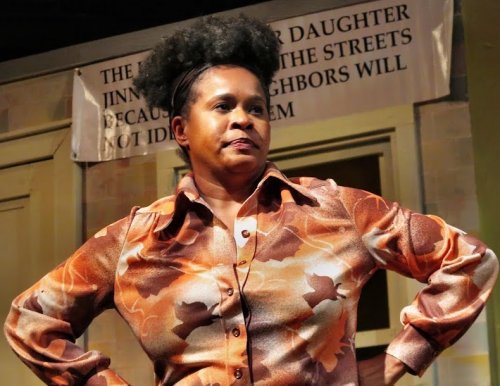
By: Darryl Reilly
“I just killed somebody, a little girl I think…The little bitch was in the way.” So, rants 15-year-old Lester Johnson (nicknamed Zooman) at the start of this powerful revival of playwright Charles Fuller’s (1939-2022) shattering 1980 Philadelphia-set Black family drama, Zooman and the Sign. As he did in his 1982 Pulitzer Prize-winning A Soldier’s Play, Mr. Fuller demonstrates a supreme command of dramatic writing. Here, he gives us an aching conflict between the aspirational lower middle class and the disaffected underclass.
12-year-old Jinny Tate was playing jacks on a front porch when she was struck down by gunfire. Her father Reuben is a former boxer and has been a bus driver for 15 years, and her mother Rachel works in a department store. The marriage is strained due to home ownership financial woes and Reuben’s infidelities. Their son Victor is a sensitive 15-year-old who seeks to protect the family by getting a gun. Fuller masterfully sets the play just after the shooting with the traumatic aftermath of shock and grief following a child’s senselessly violent death. Reuben’s cantankerous uncle Emmet and Rachel’s feisty cousin Ash arrive for the funeral; neighbors pop in with agendas. The drama is that no witnesses to the murder are willing to come forward and give statements, the frustrated Reuben puts up a sign on the front of his house and tapes up flyers on lampposts with notices which say:
THE KILLERS OF OUR DAUGHTER
JINNY ARE FREE ON THE STREETS
BECAUSE OUR NEIGHBORS WILL
NOT IDENTIFY THEM
Fuller depicts an Ibsenesque clash between the flawed but noble Reuben and the self-serving community. Most want the sign taken down; a debate rages over how Black residents should react to this crime in relation to their antipathy for the police who disdain them. The news media pick up the story; there is a searing conclusion.
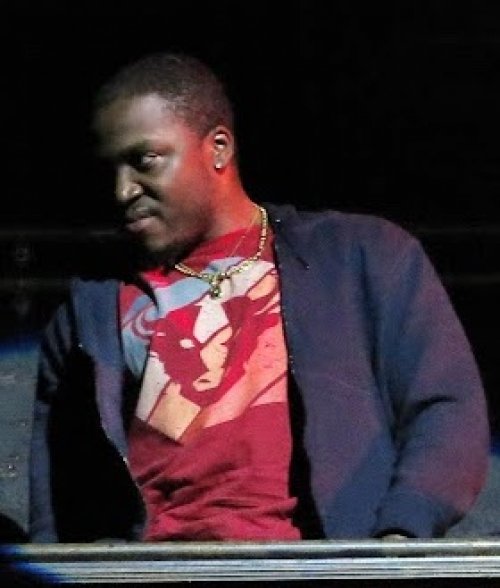
The dynamic Isaiah Joseph as Zooman anchors the show with his commanding physicality and passionate vocal delivery as he defensively expresses his thoughts while alone on the run. “That street is a warzone, she was in the wrong place at the wrong time.” Through Zooman, Fuller articulates the plight of those at the bottom. Mr. Joseph is chilling while eliciting empathy when recounting Zooman’s life highlights; a violent upbringing, being picked up by the police 21 times for things he didn’t do, and serving time as a juvenile offender for the student rape of a schoolteacher which he was not involved in. Joseph’s fearless characterization totally emodies this harrowing figure.
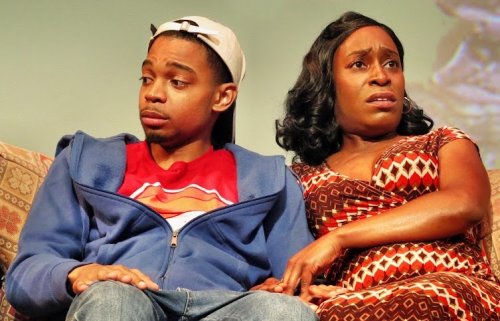
Benjamin Rowe’s beaming everyman presence enables him as the father to veer from comedic to sorrowful with humane force. The soulful Constance Thompson beautifully plays the stalwart mother with affective emotionalism. As her caustic potato salad-making cousin, the formidable Ashlee Danielle is galvanizing with her dryly delivered observations and deadpan comic timing. Giving a poignant turn is Reginald L. Wilson as the vociferous uncle, he is even more resonant after a few beers. Conveying sincerity is Isaiah Martinez as the son, tenderly evoking teenage angst and youthful idealism when he acquires a gun. The animated Salif Kone makes a delightful impression as the son’s gregarious best friend. Wadiah Brown and Steven Strickland each are zesty as hypocritical neighbors.
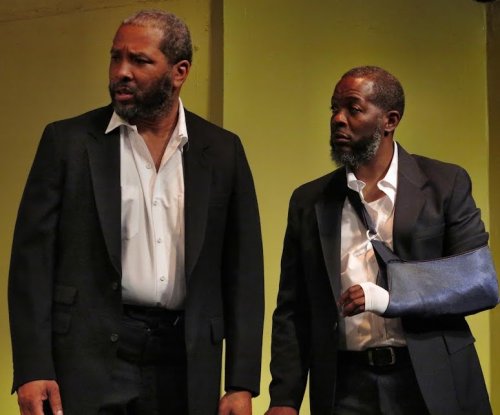
Director Phyllis Yvonne Stickney guides the cast’s intense performances while physically staging the play with scope and picturesque élan. Actors purposefully enter and exit through the auditorium and on to the stage, scalding verbal and physical battles soar, and Zooman’s exciting spotlighted in darkness flight takes place all over, including on ramps above the large theater. Ms. Stickney realizes Fuller’s vision with laudable epic theatricality.
Michele Baldwin’s video and projection design of stark black and white bleak urban imagery mixed with panoramic color cityscapes acutely visualize the play’s themes. Patrice Davidson’s vivid scenic design of a cozy living room and the pivotal porch and outside front door are perfect settings for the actions. Lighting designer Melody Beal’s gauzy brightness and ominous dimness complement the events with artistic focus. Gunshots, police sirens, pop songs and the theme from Kojak, are all finely rendered by Twan Howard’s sharp sound design. Costume designer Rhonda Lucas’ striking array of everyday and vibrant garments individualize each character.
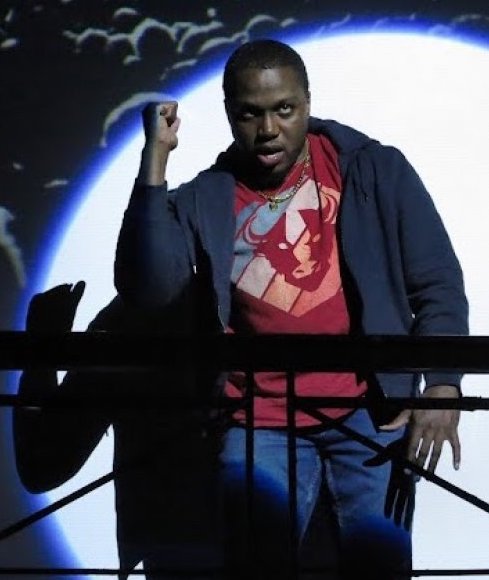
(Photo credit: Jonathan Slaff)
Zooman and the Sign was first produced by The Negro Ensemble Company, Inc.(NEC) in a Manhattan Off-Broadway theater; Fuller received a 1981 Obie Award for playwrighting for his great American play. This wrenching Off-Off-Broadway revival is presented by NEC in cooperation with Penn Live Arts, a Pennsylvania theater festival where the show played earlier this year.
Zooman and the Sign (through July 7, 2024)
The Negro Ensemble Company, Inc. and Penn Live Arts
American Theatre of Actors, 314 West 54th Street, in Manhattan
For tickets, visit www.necinc.org
Running time: one hour and 45 minutes including one intermission
